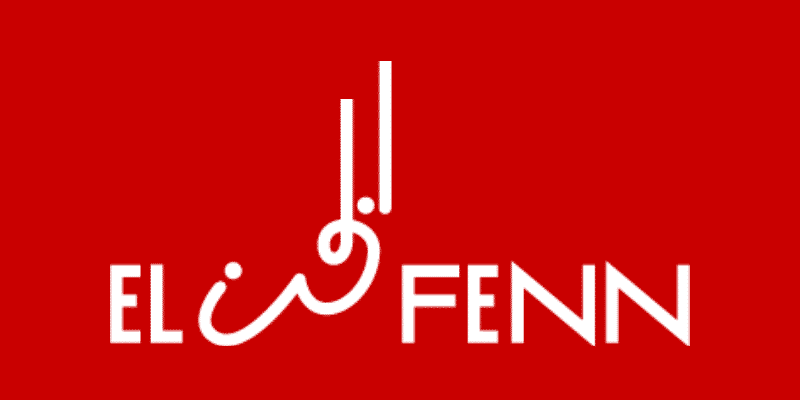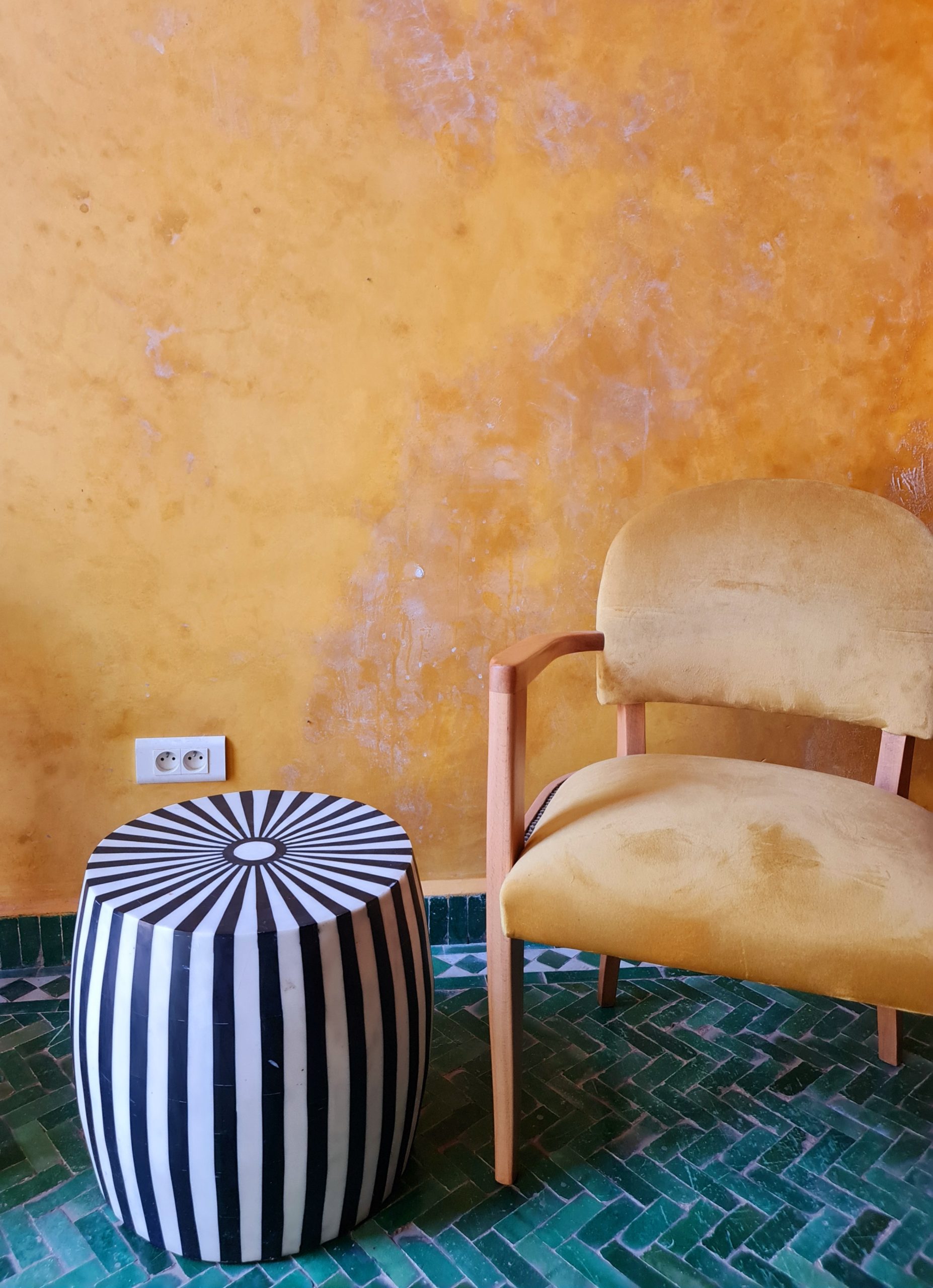
The Artisans of Morocco: Tadelakt
TRADITIONAL artisanal skills have been passed from generation to generation over centuries in Morocco. They are a fascinating, and integral part, of the culture here. In the first of a new series, we dive into the history and use of one of the most iconic artisanal disciplines: tadelakt lime plaster.
THINK of Moroccan decor and you might well picture the richly coloured walls and floors found in so many buildings here.
And what makes them so memorable is that they don’t have the uniform perfection of modern surfaces. Tadelakt (pronounced ta-dee-lact) is a form of lime plaster that is mixed and applied by hand creating subtle variations in pigmentation that give surfaces a tactile, organic feel.
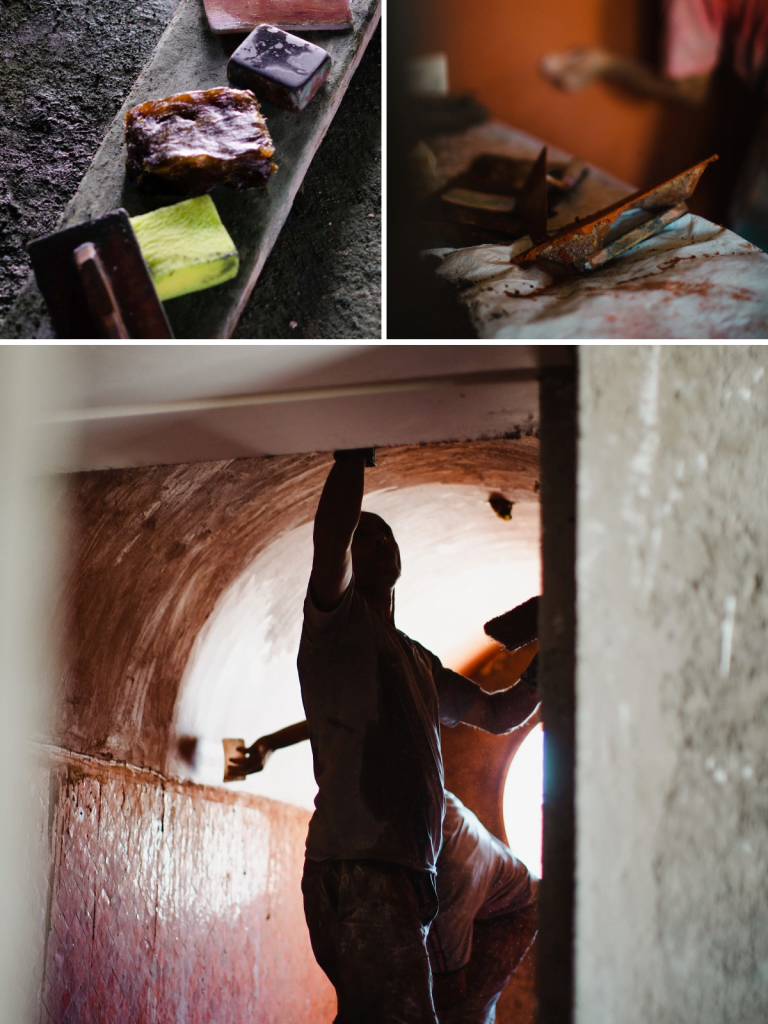
What’s unique about the process is that once the lime plaster has been applied, it’s rubbed smooth with stones before olive oil soap is applied to create a soft waterproof sheen. The technique has been perfected over centuries by Moroccan artisans and, although tadelakt is growing in popularity elsewhere, there are few outside Morocco who have been expertly trained in it.
Tadelakt was first used in the eleventh century to coat Amazigh water cisterns and here at El Fenn we use it on walls and floors of course – but we’ve also created baths, sinks, fireplaces and even bed frames using it.
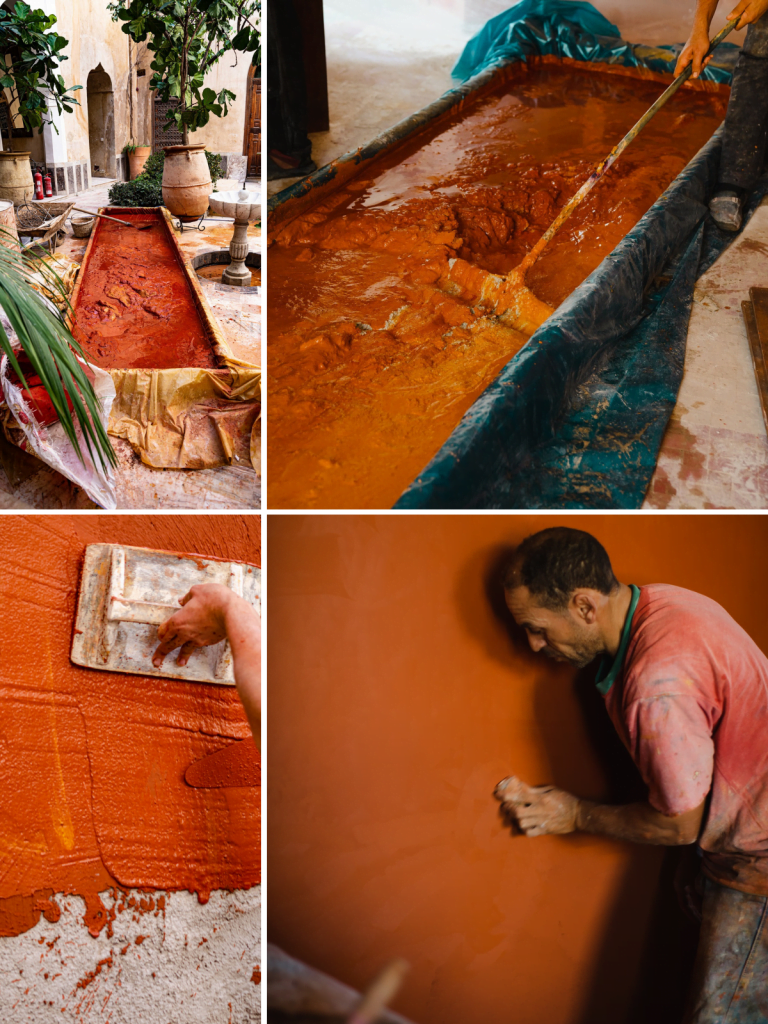
We love the character it brings to our interiors. Because the colour is created when pigment is added to the plaster just before application, we’ll stand with the artisans as they mix the two – a bit more pigment here, a bit more there – to create beautifully rich colours. No two are ever exactly the same.
The other characteristic we love is the patina that tadelakt develops over time. It’s very durable and robust but the pigment slowly fades in patches giving it a beautifully aged look.
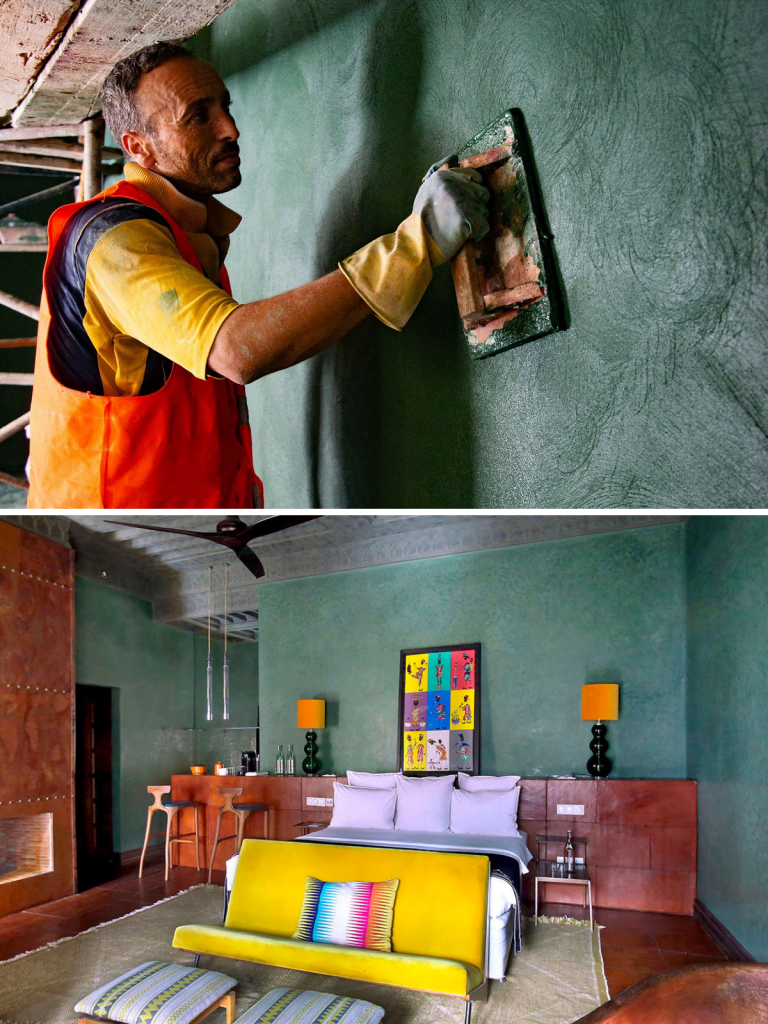
The word tadelakt derives from an Amazigh word meaning ‘to rub in’ and it can be shaped into lines or curves. It’s thought to be derived from qadad, a plaster that’s used in Yemen. But the artisans here created their own techniques to produce the tadelakt that’s so unique to, and synonymous with, Morocco.

